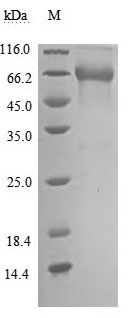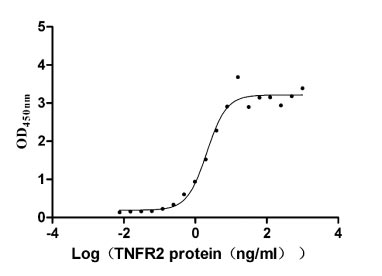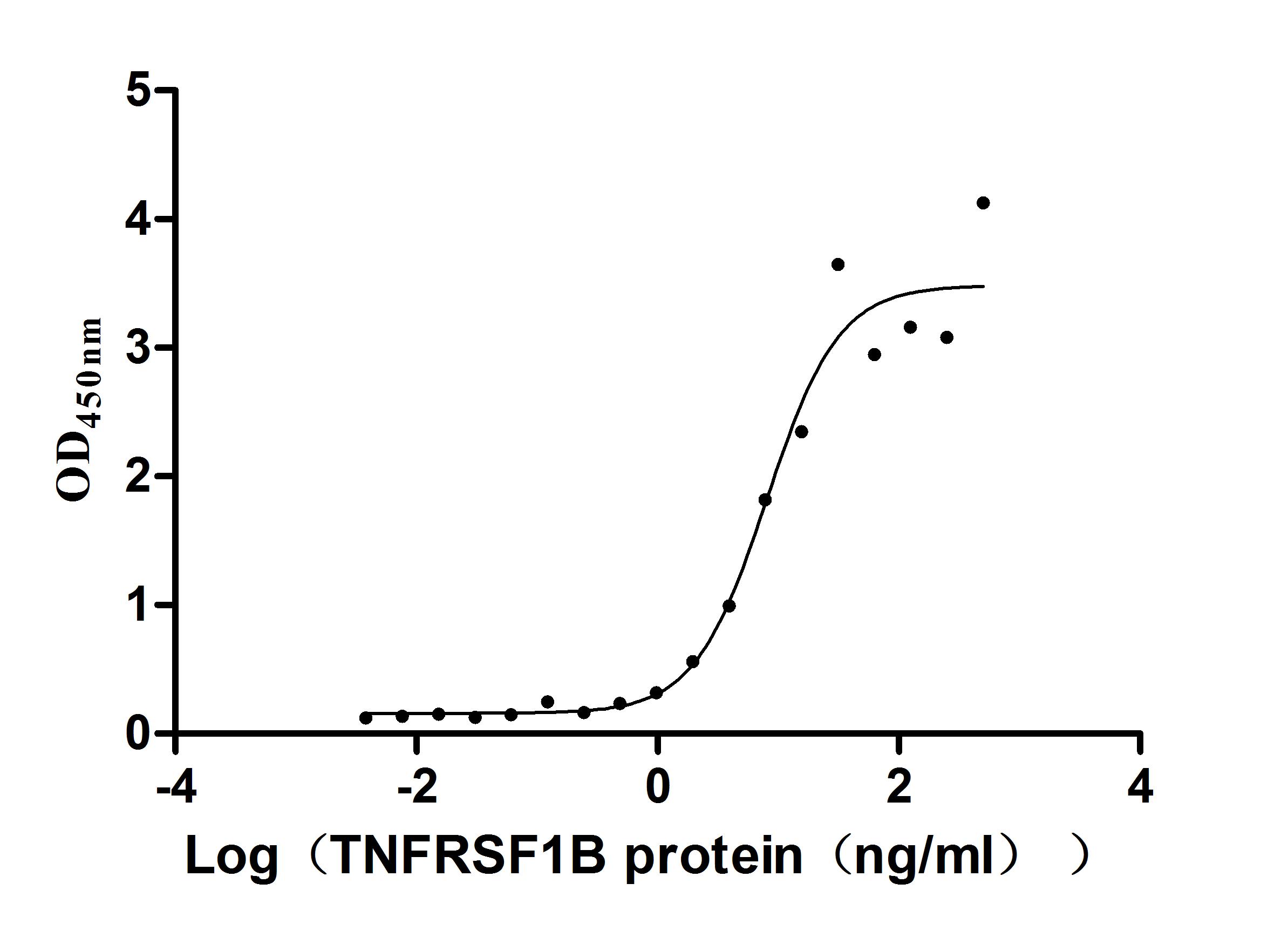A DNA fragment encoding amino acid residues Leu23 to Asp257 of the human TNFRSF1B was fused with a hFc-tag at the C-terminus and then expressed in mammalian cells. The product is the recombinant human TNFRSF1B protein. Its purity is greater than 95% determined by SDS-PAGE. Under reducing conditions, the TNFRSF1B protein migrated to the molecular mass band of approximately 65 kDa on the gel. Its endotoxin content is less than 1.0 EU/ug measured by the LAL method. This recombinant TNFRSF1B protein is in stock now.
TNFRSF1, also called TNF-R2, is a receptor for TNF-α and is restricted to immune cells, endothelial cells, neural cells, and mesenchymal stem cells (MSCs). TNFα/TNFR2 interaction mediates pro-inflammatory effects, cell survival, and proliferation, and promotes angiogenesis.










